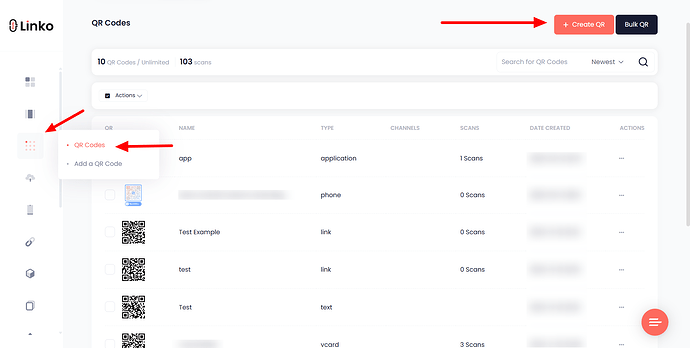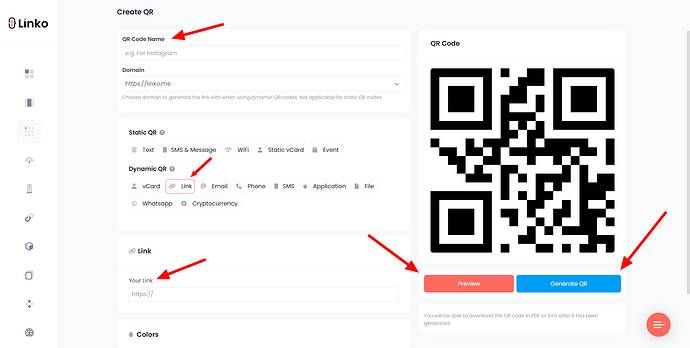You can’t directly upload a .css file into Linko’s QR code maker, but there’s a simple workaround.
-
First, upload your stylesheet to an online storage platform like Google Drive, Dropbox, or GitHub Pages and make the file link public.
-
Then, paste that link into a free QR code generator, including Linko’s URL QR code tool to create your code instantly.
Without signing up, you can make a static QR code, but if you want a trackable and editable dynamic QR code, just create a free Linko account.
 Steps to Convert Your CSS File into a QR Code
Steps to Convert Your CSS File into a QR Code
1. Upload your CSS file online
- Store the file in any public file hosting service such as Google Drive, Dropbox, or GitHub. Make sure the link is accessible to anyone without a password.
2. Copy the file’s shareable link
- Right-click your uploaded file, select Get link, and set it to Anyone with the link can view.
3. Open Linko’s QR code generator
- Visit Linko and head to the QR Codes maker page.
4. Choose the QR type
-
For a quick, free option without an account, select the static URL QR code tool and paste your link.
-
For a dynamic QR code (editable and trackable), sign up for a free Linko account, select Link/URL under dynamic QR options, and paste your link.
5. Customize your QR code (optional)
- Pick colors, patterns, or add a logo to match your brand.
6. Download your QR code
- Save it in PNG, SVG, or WEBP format. Your code is ready to print or share.
Why Use a QR Code for a CSS File?
QR codes for .css files are perfect for developers, educators, and designers who want to share stylesheets quickly without email or file transfer apps.
For example:
- Web design classes can give students quick access to a stylesheet.
- Clients can scan the code to preview or download a theme’s style file.
- Team members can access and update a shared stylesheet from their phones.
If you use a dynamic QR code, you can replace the linked file without changing the printed code, which is great for updating styles without reprinting materials.

